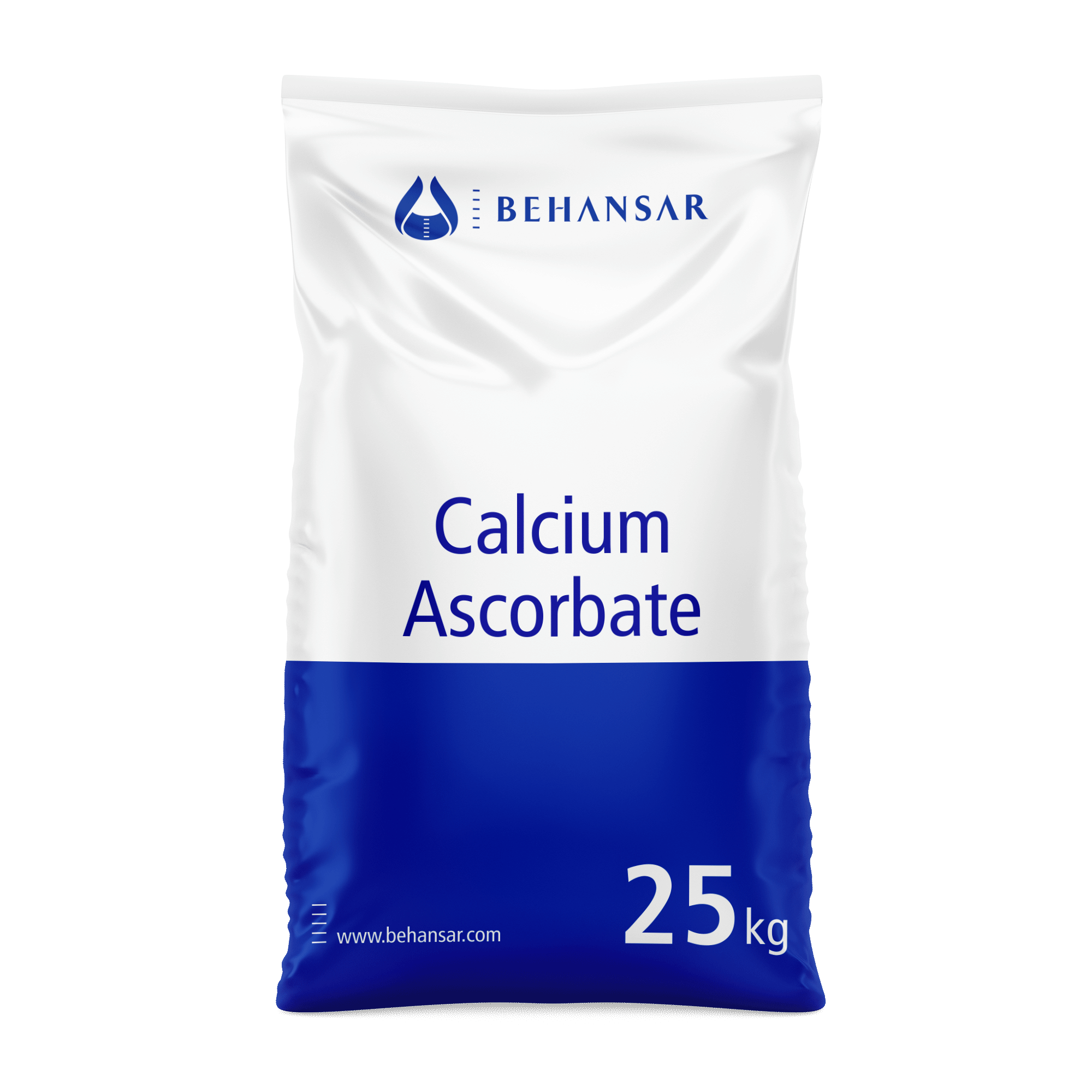Calcium Ascorbate
| Chemical Formula: | C₁₂H₁₄CaO₁₄ |
| Molecular weight | 390.31 |
| .CAS No: | 5743-27-1 |
| Applications: |

About Calcium Ascorbate
Calcium ascorbate is a compound with the molecular formula CaC12H14O12. It is the calcium salt of ascorbic acid, one of the mineral ascorbates. It is approximately 10% calcium by mass. As a food additive, it has the E Number E 302. It is approved for use as a food in the EU, USA and Australia and New Zealand.
Vitamins and minerals, collectively known as micronutrients, are essential elements for the survival of organisms owing to their vital role in the maintenance of the body\'s homeostasis. L-Ascorbic acid (AA), commonly known as vitamin C (vitC), is an important water-soluble antioxidant micronutrient involved in the regulation of a number of gene expressions and is an essential cofactor for various classes of enzymes involved in the biosynthesis of amino acids, neurotransmitters and hormones. Supplementation of vitC is very often recommended (up to 2000 mg per day) to eliminate its deficiency and hence for efficient cellular processes since a mutation which encodes L-gulono-g-lactone oxidase does not allow its synthesis in humans. Large population studies have reported that vitC deficiency is common even in developed countries. A significant association has also been demonstrated between vitC deficiency, balanced immune functions and morbidity/ mortality. Low levels of plasma vitC (20 mM) has also been shown to correlate with the severity of illness among pneumonia, sepsis and COVID-19 patients.
Vitamin C has been shown to degrade quickly depending on the environmental factors such as pH, temperature, light and oxygen. Under in vivo conditions, it is mainly found in the reduced or anionic ascorbate (ASC) form which may reversibly be oxidized to dehydroascorbate (DHAA) and further to inactive 2,3-diketogulonic acid. In humans, body concentration of vitC depends on its intake, intestinal absorption, tissue distribution, renal re-absorption and excretion. The pharmacokinetics of vitC has been shown to be complex due to a saturable active transport mechanism mediated by sodium-dependent vitC transporters (SVCT) and exhibited dose-dependent non-linear kinetics. Though regular uptake of 200 to 400 mg dose has been shown to achieve a steady state plasma concentration of 50 to 70 mM, either multiple gram dosage or infusion is suggested to overcome its tight intestinal absorption control and hence to exceed the homeostatic saturation level. Though 100% absorption was reported for 200 mg single dose, the absorption was reported to reduce to 33% when the dose was increased to 1250 mg.
Calcium ascorbate is a widely recommended vitC supplement due to its compatibility under gastrointestinal conditions, compared to the ascorbic acid which may results in elevated gastric reflux leading to gastrointestinal disorders.
Calcium ascorbate is also used in moisturizers, lotions, nail polishers and creams for treating the face (excluding eye-specific products) and body.
| Product Number | Product Name | Form | Pharmacopoeia | Solvency | Storage conditions | Color | Purity | Additional information |
|---|---|---|---|---|---|---|---|---|
| 151300111 | Calcium Ascorbate | Powder | USP | Freely soluble in water (approximately 50 g per 100 mL); slightly soluble in alcohol; insoluble in ether. | Preserve in tight, light-resistant containers. | White to slightly yellow, practically odorless powder | 98.0% - 101.0% | Practically odorless powder |

